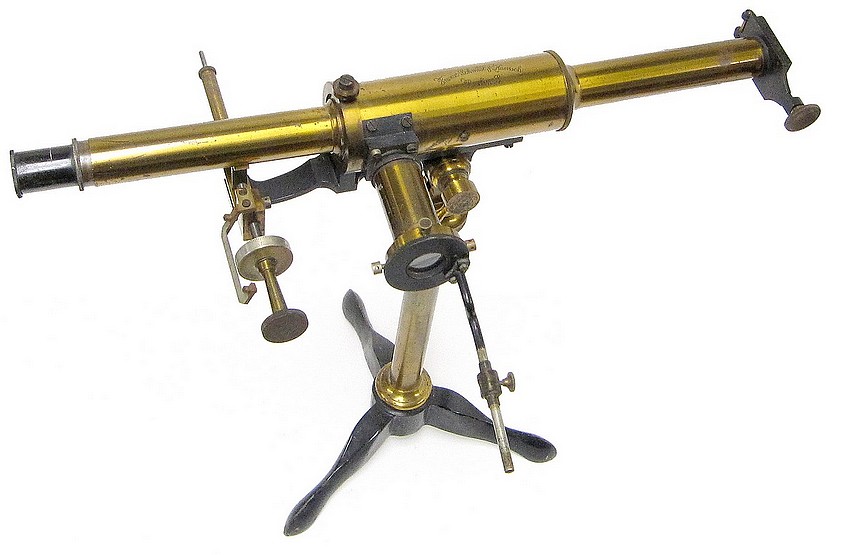
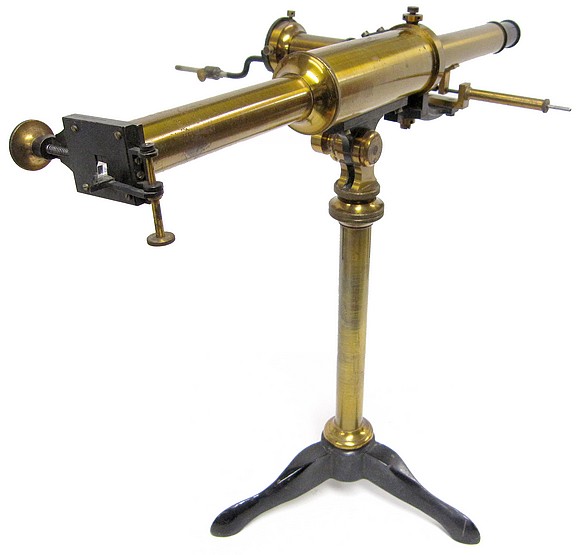
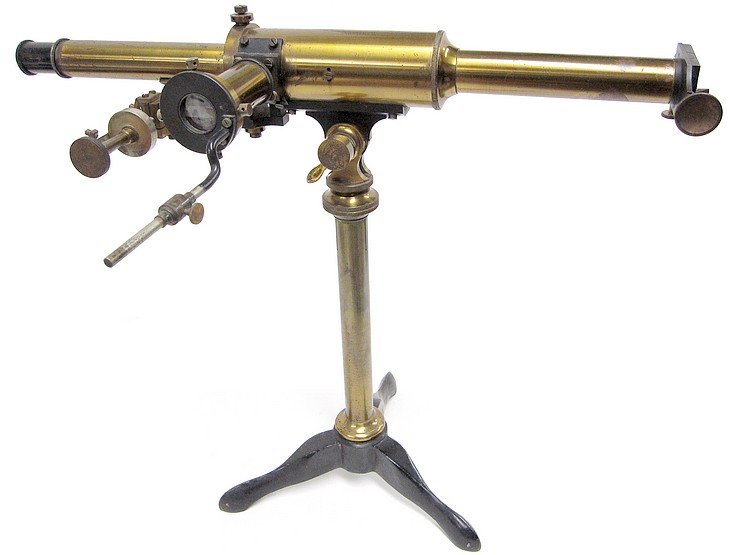
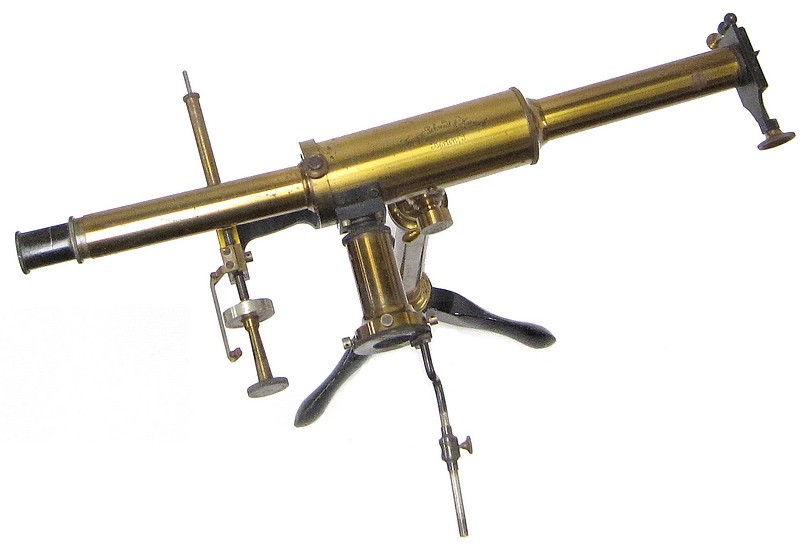
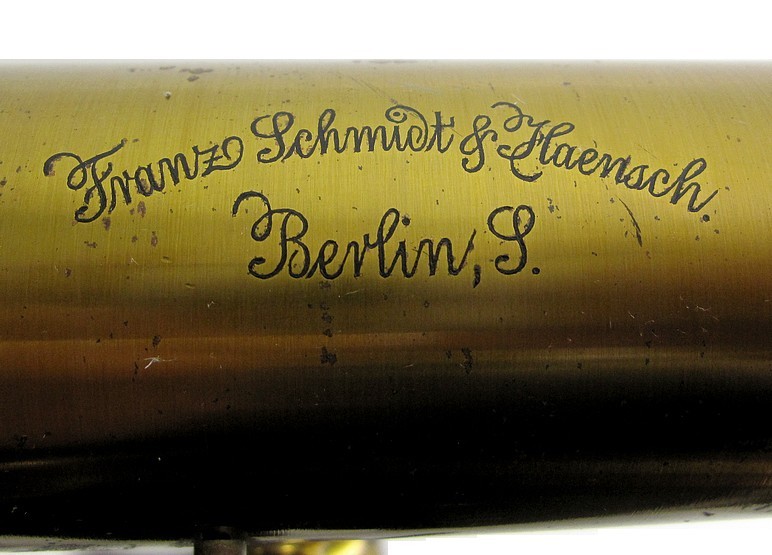
Extracted from: Henry Heil Chemical Co., Catalogue
and price list of Chemical Apparatus,
1903
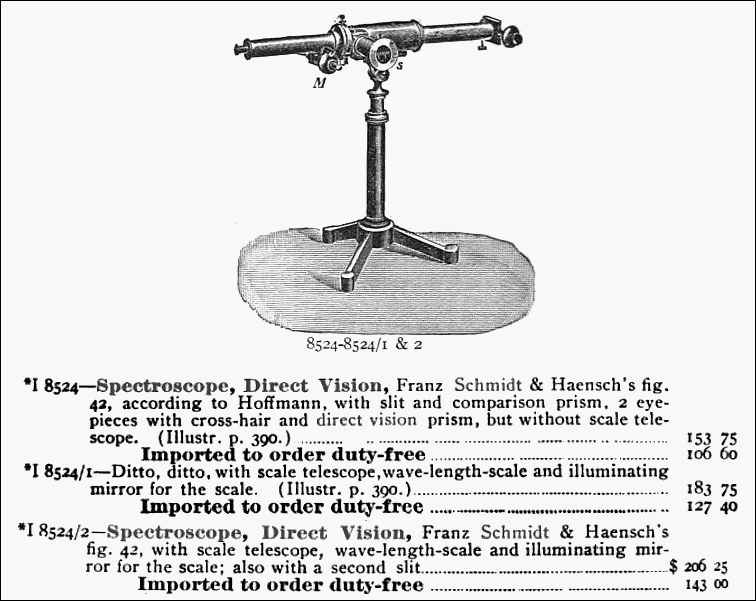

Extracted from:
Report on Machinery and Processes of the
Industrial Arts, and Apparatus the Exact Sciences,
F. A. P. Barnard, 1869
A form of the instrument
superior to either of these has been contrived by
Hoffmann, of Paris, the very able constructor to whose
skill the investigators of the higher optics have been
so much indebted, and who has furnished to Father
Secchi and to Mr. Huggins the instruments which have
enabled them to prosecute so successfully the spectral
analysis of stellar and nebular light. In Mr.
Hoffmann's direct-vision spectroscope, the apparatus
for dispersion consists of five prisms, three of crown
glass and two of flint glass, cemented together into
one system with their refracting angles alternately in
opposite directions. The arrangement resembles that of
the group of letters AVAVA, in which the cross-line of
the letters A indicates the path of the light through
the system. The dispersion is differential, the angles
of the prisms being so chosen as to compensate the mean
refraction; and the mean ray emerges parallel to the
direction of incidence. But as the extreme rays of the
spectrum produced by the dispersion are necessarily not
parallel to the same direction, the tube is jointed at
a point just behind the system of prisms, and the part
near the eye has a liberty of lateral motion sufficient
to enable the observer to bring any portion of the
spectrum into the field of vision. The angles actually
given to the several prisms at their summits are ninety
degrees for the two flint-glass prisms, represented in
the group of letters above by the two Vs, and also for
the central prism of crown glass. The angles of the
extreme crown-glass prisms are only sixty-nine
degrees.
It is obvious that by
increasing the number of prisms a larger dispersion
might be obtained; but this would render the instrument
more cumbrous, and would diminish the intensity of the
illumination. The system of prisms occupies of course a
position in the tube immediately in front of the
objective of the telescope. But in front of the system
itself is another lens designed to render the rays
parallel as they fall on the prisms; and the tube,
which is extended beyond this lens, carries at its
extremity the variable aperture through which the
narrow beam of light to be observed is admitted. In
order to compare this light with that coming from a
different source, a small reflecting prism is placed in
front of the opening which it covers only in part, and
which is sustained by a support fastened to the tube by
a ring clamp. A micrometer very finely divided on glass
is introduced into the field of view within the
instrument, by means of which the observer may measure
the distances between the spectral lines.






